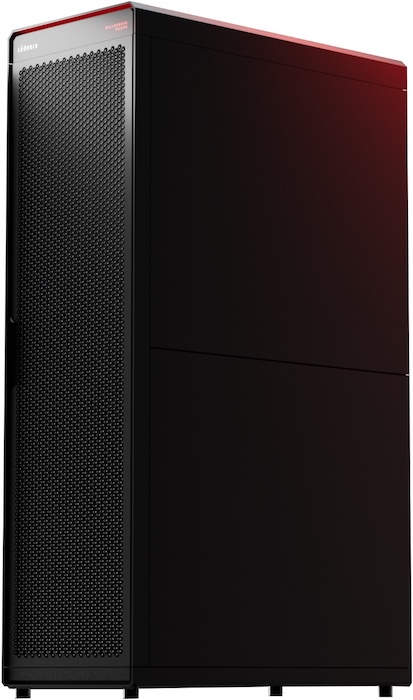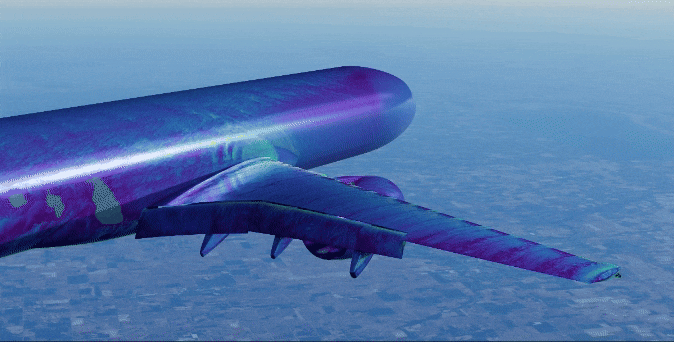At CadenceLIVE Silicon Valley 2025, Cadence and NVIDIA jointly announced a significant leap forward in high-performance computing for engineering and life sciences: the Cadence® Millennium™ M2000 Supercomputer. This new platform, purpose-built for AI-accelerated simulation, is designed to meet the growing computational demands of electronic design automation (EDA), system design and analysis (SDA), and molecular discovery. By integrating the latest NVIDIA Blackwell architecture and CUDA-X software libraries with Cadence’s advanced solvers, the Millennium M2000 sets a new standard for simulation speed, scale, and efficiency.
A New Class of Supercomputing for AI-Driven Workloads
The Millennium M2000 Supercomputer is designed to meet the needs of next-generation AI infrastructure, physical AI systems, and drug discovery. The system utilizes NVIDIA HGX B200 platforms and NVIDIA RTX PRO 6000 Blackwell Server Edition GPUs, which are closely integrated with Cadence’s electromagnetic (EM) and molecular simulation software. This combination allows the M2000 to deliver up to 80 times the performance of traditional CPU-based systems for demanding workloads.

Cadence Millennium M2000 Supercomputer
The platform’s architecture results from a multi-year collaboration between Cadence and NVIDIA, with both companies making significant advancements in hardware and software. The Millennium M2000 is available for deployment in the cloud and on-premises, providing flexibility for organizations with diverse infrastructure needs.
The Key to Breakthrough Performance: Co-Optimized Hardware-Software
One of the Millennium M2000’s defining features is its tightly integrated hardware-software stack. Cadence’s suite of solvers, spanning EDA (Electronic Design Automation), SDA (System Design and Analysis), and molecular sciences, is optimized to leverage the parallelism and acceleration capabilities of NVIDIA’s Blackwell GPUs and CUDA-X libraries. This co-optimization yields significant reductions in simulation run times, enabling engineering teams to tackle previously unreachable problems.
For example, traditional chip-level power integrity simulations, which often require hundreds of CPUs and days of compute time, can now be completed in less than a day on a single Millennium M2000 system. This acceleration is not limited to semiconductor design; it extends to computational fluid dynamics, data center digital twins, and molecular modeling for drug discovery.

The system’s efficiency is just as remarkable. By leveraging GPU acceleration and optimized software, the Millennium M2000 can achieve up to 20 times lower power consumption than CPU-based clusters, addressing performance and sustainability goals for modern data centers.
Enabling Intelligent Design Across Industries
The Millennium M2000 is a versatile platform for various industries, including hyperscale computing, automotive, aerospace, defense, and pharmaceuticals. Its capability to conduct large-scale, high-fidelity simulations transforms workflows in several key domains.
Semiconductor and 3D-IC Design: The industry’s first emulator is purpose-built for AI-driven design, integrating multiphysics capabilities such as power, thermal, stress, warpage, and electromagnetics. This integration enables comprehensive analysis and optimization of 3D-IC and advanced packaging designs, improving reliability and efficiency while shortening development cycles. Engineering teams can now simulate complex scenarios in hours instead of weeks, accelerating time-to-market for new silicon.
Autonomous Systems and Digital Twins: As AI infrastructure expands, efficient, scalable data center design becomes critical. The Millennium M2000 accelerates creating and operating digital twins, virtual replicas of data centers and autonomous machines, enabling organizations to optimize power, cooling, and networking before physical deployment. This approach reduces risk, lowers operational expenses, and supports the rapid development of AI-powered systems such as autonomous vehicles, drones, and robotics.
Life Sciences and Drug Discovery: In the pharmaceutical sector, the Millennium M2000 empowers researchers to conduct more simulations in less time, enhancing the discovery and development of new drug candidates. Cadence’s Orion Molecular Design Platform, available on the M2000 via Cadence OnCloud, leverages the system’s computational power to explore a broader range of molecular scenarios and accelerate innovation. Integrating NVIDIA BioNeMo NIM microservices further enhances molecular modeling capabilities, supporting advanced research in life sciences.
Real-World Impact
The collaboration between Cadence and NVIDIA is already yielding tangible results across multiple domains. NVIDIA’s engineering teams have utilized Cadence’s Palladium emulation and Protium prototyping platforms to verify and bring up the NVIDIA Blackwell architecture. In contrast, Cadence has harnessed NVIDIA Grace Blackwell-accelerated systems to perform complex fluid dynamics simulations for aerospace applications, achieving results in under 24 hours that would have taken several days on traditional CPU clusters.
Visualization represents another innovative area. By integrating NVIDIA Omniverse APIs, Cadence facilitates detailed visualization of intricate fluid dynamics, supporting more intuitive analysis and decision-making for engineers and researchers.
Building the AI Factory
A significant theme emerging from the Cadence-NVIDIA partnership is the concept of the “AI factory”—a new class of infrastructure designed to support the pervasive integration of AI across industries. The Millennium M2000 is central to this vision, providing the computational backbone for digital twins and agentic AI systems.

NVIDIA Blackwell accelerates computer-aided engineering software by orders of magnitude, enabling complex simulations of fluid dynamics for the aerospace industry.
Cadence has also adopted NVIDIA’s Omniverse Blueprint for AI factory digital twins, connecting it to the Cadence Reality Digital Twin Platform. This integration allows engineering teams to simulate and optimize the physical characteristics of AI factories, including power, cooling, and networking. As a result, they can make faster and more informed configuration decisions, leading to an infrastructure that is better prepared for future AI workload demands.
Peer Collaboration and Industry Leadership
While Cadence and NVIDIA are recognized leaders in their respective fields, their collaboration on the Millennium M2000 Supercomputer highlights the power of peer partnerships in driving technological innovation. The system’s development required advances in hardware, such as the NVIDIA Blackwell architecture, and significant reengineering of Cadence’s software to exploit the new capabilities fully.
Industry observers note that this level of co-development is crucial for tackling the increasingly complex challenges in modern engineering and scientific research. By working together, Cadence and NVIDIA enable organizations to push the boundaries of what is achievable in simulation, design, and discovery.
The Millennium M2000 Supercomputer represents a new infrastructure class for AI-driven science and engineering. Its accelerated hardware, optimized software, and flexible deployment options position it as a foundational platform for the next wave of innovation in semiconductors, autonomous systems, data centers, and life sciences.




 Amazon
Amazon